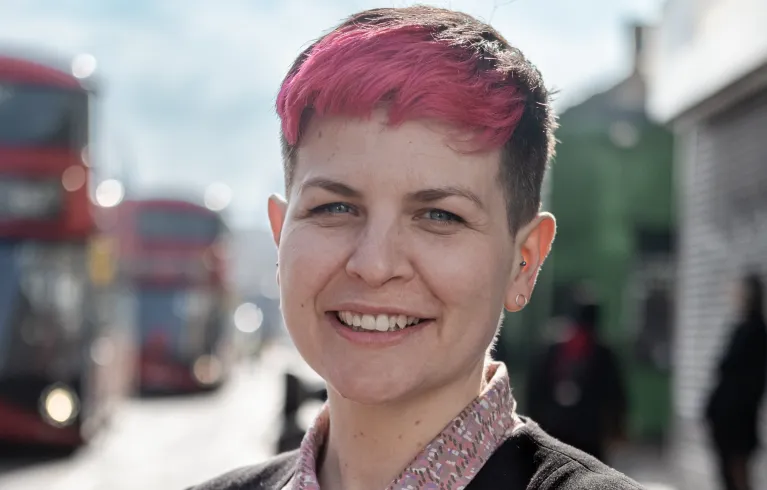
Key information
Publication type: General
Publication date:
Dear Sadiq,
Re: Whitewebbs, Planning Ref. 24/00987/FUL – Request to call in
A number of constituents have contacted me and my fellow Assembly Members, Caroline Russell and Zack Polanski, with a range of concerns about an application put forward by Tottenham Hotspur Football Club to redevelop Whitewebbs Park into a new sports facility (ref: 24/00987/FUL).
Given the significance of this proposal on the Green Belt, and residents’ concerns that the potential harm of the scheme has not been adequately considered, I am writing to ask you to call-in this application.
I have touched on some key concerns below, but I urge you to ensure you fully consider the extensive range of concerns made by local residents, in particular the Guardians of Whitewebbs.
1. Harm to Green Belt
The NPPF states that “openness” is one of the two essential characteristics of the Green Belt (para. 142) and should be protected from development in all but exceptional cases.
Your officers’ Stage 1 report outlined why the proposed development would contravene the openness of the Green Belt, stating:
“…it is considered that the proposed development would not preserve the openness of the Green Belt compared to what is existing, by way of:
- Enclosure of the training grounds with a new permanent boundary treatment; ball-stop fencing around the pitches and use of floodlighting to two of the pitches;
- Significant new extensions to the northern clubhouse;
- Erection of other new ancillary buildings on greenfield land;
- Increased traffic movements; and
- Consequential visual impacts on openness (impacts on long views, visual links intervisibility etc).”
As a result of deeming the proposal inappropriate development on the Green Belt, your Stage 1 report concluded that 'very special circumstances' are required for the application to proceed.
It is the contention of residents I have spoken to that the very special circumstances that could permit such a scheme has not been sufficiently demonstrated or evidenced. Given the delicacy of weighing substantial considerations against one another, and the significant harm this development would cause to the Green Belt, I request you call-in this application to make a proper determination on the balance of evidence.
2. Damage to landscape and biodiversity
Residents have also raised considerable concerns about the risk this development poses to local wildlife, habitats and overall biodiversity. Residents do not consider your officers’ Stage 1 report to have adequately acknowledged the risk to biodiversity due to the loss of and disruption to existing habitats – and the applicant’s claim of a 30 per cent biodiversity net gain unsubstantiated and divorced from the reality of the proposals.
The proposed development is expected to dig-up and re-landscape 50 per cent of Whitewebbs Park’s grassland and remove 207 trees. The grassland, much of which has undergone considerable rewilding since the closure of the golf club in 2021, is vitally important in sustaining biodiversity and this loss will have an untold impact on local wildlife, like birds, badgers and hedgehogs, as well as butterflies, fungi and invertebrates. They have also raised concerns that mitigations for intrusions into tree root protection areas are unlikely to be effective, and floodlighting of the pitches could have a huge bearing on winged wildlife, like the nine species of bat and 80 species of bird that are reported to have been spotted locally.
The applicant’s commitment to replace and supplant the existing stock of trees does not adequately account for the unique value of the existing trees, especially older and partially rotting trees, in supporting rare insects and other wildlife. Residents fear that any positive impact of this tree planting plan would take decades to materialise, if at all, and skews the biodiversity net gain (BNG) metric away from the reality for the natural environment.
Residents are concerned the complex impacts of this proposal have not been adequately captured by the applicant or your officers’ Stage 1 report, and fuller scrutiny of the applicant’s BNG metric, the Environmental Impact Assessment and Arboricultural Impact Assessment is required.
3. Restrictions on public access
I share residents’ concerns that the proposal represents the privatisation of a huge swathe of publicly owned land. Over a third of the site will stop being publicly accessible with permission to use and access the land becoming strictly controlled by a private company. The applicant justifies this change of use given much of the land was previously used as a golf course. This claim was echoed in the GLA’s Stage 1 report. But even when the site was primarily used as a golf course, over four years ago now, it was never fenced-off and always remained publicly accessible. In the proposed development, the applicant would limit and control access to swathes of land and new facilities on what is currently a public park.
4. Dispute over SINC designation process
It is also important to note that the Guardians of Whitewebbs have made a formal complaint to Enfield Council (Enfield Council complaint ref. 101001267200) over its Site of Importance for Nature Conservation (SINC) designation process from 2021, which decided that the bulk of the site affected by this scheme would not be awarded SINC status. The complaint makes the case that Enfield did not follow the guidance set out in the London Plan or the NPPF. This complaint has been escalated and yet to be settled.
This is incredibly significant for the planning application, given the London Plan Policy G6 states unequivocally: “Sites of Importance for Nature Conservation (SINCs) should be protected,” and goes onto describe the hierarchy of mitigations that applicants should adhere to where a SINC designation is in place. This complaint is therefore incredibly salient, and should be taken into account at Stage 2.
I urge you to call-in this application and to give due consideration to the issues both local residents have raised and the points I have made here.
Kind regards,
Zoë Garbett AM
Related documents
Whitewebbs Letter to Mayor